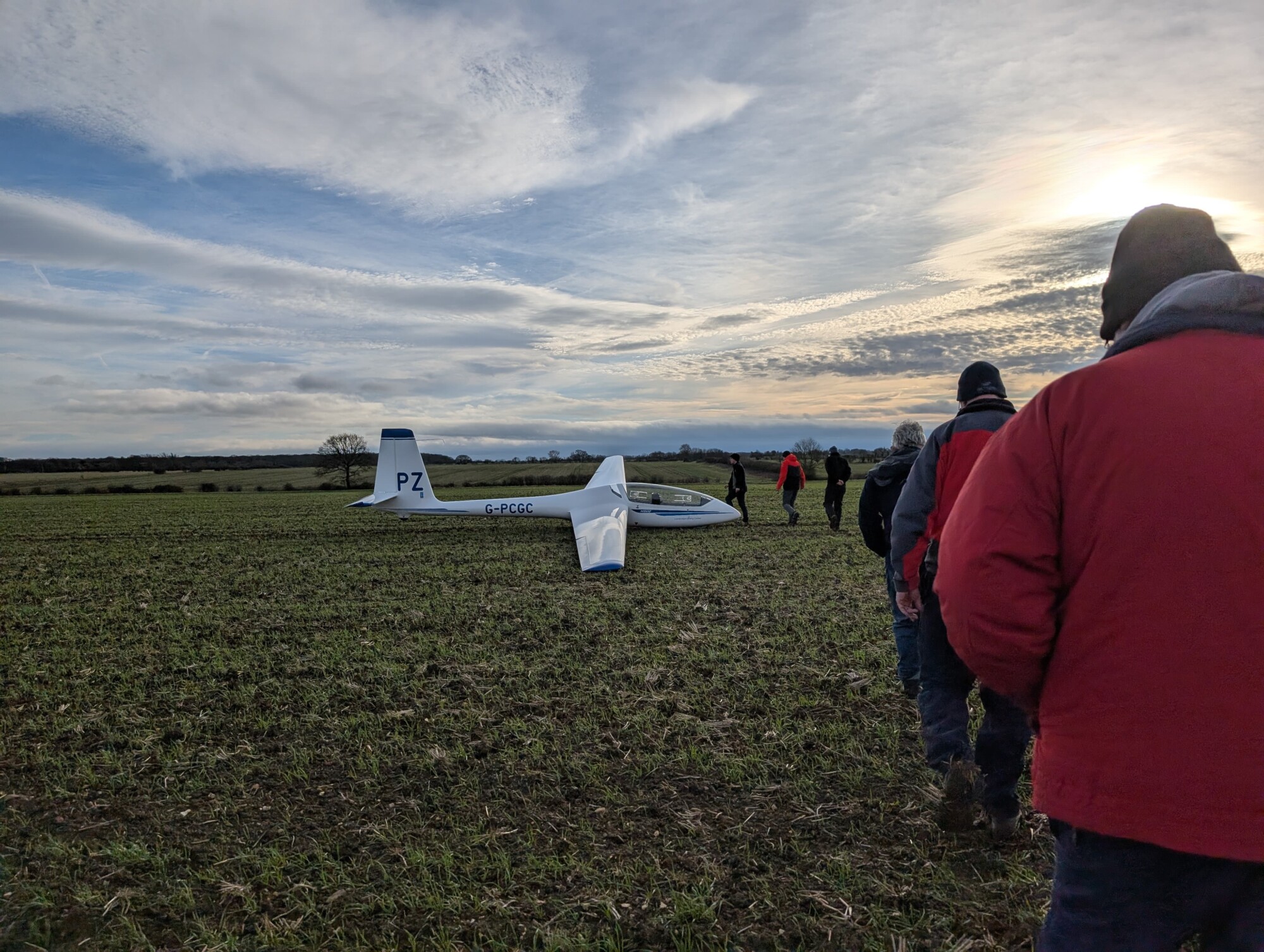“Landing Out” is very much part of gliding and something all glider pilots prepare for and expect to do from time to time, as you would expect from flying an aircraft with no engine – but it is not an emergency or, in most cases, of any significant risk.
Any time a glider is near the ground all pilots have a Plan B in mind – where will I land if I need to? Sometimes it’s a case of selecting a field as height is being lost, setting up a circuit and then landing, or as in this case, after a failed aerotow launch very near to the airfield, knowing exactly what to do, even before taking off. With an aerotow launch the glider gains height slowly, so the initial phase leaves the pilot with few options. Without the option of returning to the airfield, the best option in this case was to turn slightly and land along the large field at the end of one our runs, so that’s the one the pilot took.
Once down the aircraft needs to be recovered back to the airfield, which in today’s very muddy conditions meant disassembly and packing into its trailer, followed by reassembly, checked over and then returned to service, with no harm done, other than a lot of muddy boots and a very muddy aircraft.
It’s a rare event, but part of the fun of gliding and as you can see from the photos has brought a smile to the faces of all the volunteers involved in bringing a very soggy bird back to its nest.


